For those of you foreign to Cacao Ceremonies, Cacao Ceremonies are a celebratory ritual that opens the heart through the use of cacao. Other meditation modalities are used such as sound baths or smoking rituals. Traditionally Cacao Ceremonies have been conducted by the Maya and Ancient Aztec civilization. Origins source back to 1900 B.C. Ceremonies were conducted by ancient shamans, to prepare for or be propelled into journeys. Modern day Cacao Ceremonies are still conducted. ChocoVivo is playing a part in bringing the heart opening ceremony to a more global audience, by conducting ceremonies the last Friday of every month.
Want to know how to prepare for a Cacao Ceremony? Click on any of the following topics. If you're still curious about what to know what's involved in a Cacao Ceremony? Read here to get more immersed in this world of Cacao & Celebration.
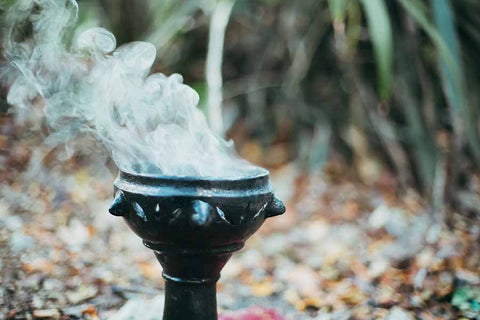
What will you get out of a Cacao Ceremony versus other methods of meditation?
Cacao tends to be more a heart opener and brain stimulator. You're also drinking something pure so if this becomes a regular practice, you'll notice your appreciation for cleaner foods. Cacao is a superfood and most people enjoy it as chocolate bar or in their smoothies due to their antioxidant benefits. Chocolate was once used in every facet of life back in Mesoamerican civilization.
With daily incorporation of cacao, don't be surprised if it affects your mood and energy in a positive way. Diet is always a factor, but we suspect that once you start and eventually make pure cacao a consistent element in your diet, your cravings for heavy carbs, sugar and salt will wane away and most of all, you'll be happier. It's called the Bliss Factor for a reason.
The Varying Renditions of Cacao Ceremonies
Some ceremonies involve strangers uniting in a circle to attempt to remove the sense of “otherness” in the room, allowing for a feeling of intimacy to be achieved among previously unknown people.
Some ceremonies involve dances at the end or the middle of the ceremony with the movement facilitating spiritual awakening and self-transformation.
Other ceremonies involve prayer and unified singing to further manifest feelings of togetherness and to bring forward wishes and positive energy.
Remember, a Cacao Ceremony is not a “trip” or drug-induced ritual, Cacao Ceremonies are a facilitator of self-reflection and spiritual awakening, allowing one to consider who you are, analyze one’s hopes, wishes, and dreams, and let go of the past in order to grow from it and build a better future for oneself and others.
What is Ceremonial Cacao?
Cacao, the primary ingredient in ceremonial cacao, has been used by indigenous peoples of Mesoamerica for thousands of years. It was considered a sacred plant, revered for its numerous properties and mystical qualities. Traditionally, cacao was consumed in ceremonial settings, often as a means of communing with the divine and facilitating spiritual journeys.

The Spiritual and Cultural Significance
Ceremonial Use
Ceremonial cacao is more than just a beverage; it's a tool for inner exploration. It is believed to open the heart and allow for deep emotional release and connection. Many people use it as a means to connect with their inner selves and gain insight into their lives.
Indigenous Traditions
Indigenous cultures in Central and South America have preserved the tradition of using cacao in their rituals. These ceremonies are often guided by experienced shamans and serve as a means of healing, celebration, and spiritual awakening.
Health Benefits of Ceremonial Cacao
Cacao is not only spiritually significant but also boasts various health benefits.
Antioxidant Properties
Cacao is rich in antioxidants, which can help protect the body from oxidative stress and reduce the risk of chronic diseases.
Mood Enhancement
The consumption of ceremonial cacao can boost serotonin and endorphin levels, leading to improved mood and overall well-being.
Heart Health
Cacao has been associated with improved cardiovascular health, as it may help lower blood pressure and reduce the risk of heart disease.
Preparing Ceremonial Cacao
Ingredients and Tools
To prepare ceremonial cacao, you'll need high-quality cacao paste or beans, hot water, and optional sweeteners or spices. A ceremonial cacao bowl and a whisk (known as a molinillo) are typically used in the process.
The Ritualistic Process
Preparing ceremonial cacao is more than just mixing ingredients; it's a sacred ritual that involves intention setting and mindfulness. Each step is carried out with reverence and gratitude.
Ceremonial Cacao vs. Regular Cocoa
While both ceremonial cacao and regular cocoa come from the same source, they are processed differently and have distinct purposes and effects. Ceremonial cacao is minimally processed and contains a higher concentration of beneficial compounds.
Where to Find Ceremonial Cacao
Ceremonial cacao is not as widely available as regular cocoa, but you can still find it in specialty stores or order it from reputable online retailers.
How to Hold a Ceremonial Cacao Ceremony
Creating Sacred Space
Before beginning a ceremonial cacao ceremony, it's essential to create a sacred and safe space. This may involve setting up an altar, lighting candles, and playing soothing music.
The Ceremony Steps
A typical ceremonial cacao ceremony involves drinking the cacao mindfully, setting intentions, and engaging in activities like meditation, journaling, or simply sitting in silence.
Thirteen things to know before going to your first Cacao Ceremony
- Come with an open mind - you don’t have to be a health guru or chocolate connoisseur to participate in a cacao ceremony so don’t fret. Cacao ceremonies do different things for everyone.
- Expectations: Don't think you'll have a spiritual revelation. Simply come if you want some time to self-explore and over time, you will find that you were meant to receive what you needed at that night. Consistency and practice is always the key when going to this.
- Expect to take off your shoes so if you have toes you’d rather keep hidden make sure you have socks to keep your feet warm. Body temperature starts to drop as you lay down and rest so bring a small scarf or light blanket.
- Come with a very light stomach or an empty stomach. If you are new to this, come eating something very light. For those that are used to fasting and cleansing, come with an empty stomach. Cacao is very filling so drinking and eating cacao will start to stimulate your nervous system.
- There’s no formal attire or uniform to wear during an official cacao ceremony so dress comfortably because you’ll be sitting and lying down.
- Bring a yoga mat, pillow and scarf. Don't bring the whole camping gear. Respect the idea of less is more. Space can be tight. Embrace what may seem uncomfortable to be comfortable. Because you being present is all that is needed.
- Be ready to drink cacao with no sugar or with some spices with water. Typical serving size is 3 oz or more. Authentic ceremonies will serve this to you without sugar.
- Be ready to eat cacao with no sugar which will taste more bitter than in drink form. The person leading the ceremony will guide you on how to enjoy the bitterness If you are cringing as the chocolate melts on your tongue, allow the beauty of the alkaloids of chocolate give you the energy that you need. Instead of thinking that this tastes gross or you're not use to the taste, observe why you don't like it and what does it trigger in your body? Let the chocolate sit there, because maybe you do enjoy it. Think of it like exercising or stretching. You don't like it, but after awhile, it's a good pain and good discomfort that reminds you that you're working your body to reach its optimum. If you're coming into a cacao ceremony thinking that you're going to be on a Sugar High - you've signed up for the wrong thing. This is Food, not Candy.
- Bring a water bottle.
- During the ceremony, if you feel like the instruments are too intense or that the person next to you is loud, fidgety or even snoring, keep in mind cacao ceremonies are an experience and you are receiving what you were meant to receive. Don't fight the control. The purpose is to understand that It’s best to simply an awakening and experience.
- Cacao ceremonies can last anywhere from 1 to 2 hours depending on who is leading it.
- Be ready for unashamed heart opening and eventually a greater awareness of yourself and who you were really meant to be.
- Last but not least, Turn OFF your phone.
Respect the surrounding space around you and keep in mind cacao ceremonies are an experience. It’s best to simply enjoy it. And if you keep this as a regular routine and incorporating Cacao in bar, powder or nib form, you will finally see how this is biohacking at its best.
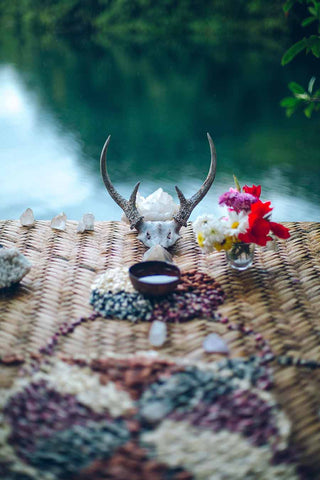
Testimonials About the Ceremonial Cacao Experience
Here are a couple testimonies from our last attendees:
What did you expect in this cacao ceremony?
Susan: No expectations. I was just available to an experience
Darcy: Well that was my third one. I didn’t have any expectations. I was intrigued by the Mayan Tradition of drinking cacao...with the focus of breath, the spiritual element of sharing of cacao and the community.
Who do you recommend coming to our cacao ceremony?
Susan:Anyone and everyone
Darcy: I feel like it’s for everyone.
Why have you kept coming to our Cacao Ceremonies?
Susan: I want to understand more deeply the importance and benefit of cacao.
Darcy: I feel like I learn a lot about myself.
How did you feel after the first cacao ceremony, both physically and spiritually?
Susan: I felt as if I was vibrating internally at a faster pace. I felt lighter more available, and relaxed. The whole experience was soothing and comforting.
Darcy: Full of delight and vibration. I felt enlivened enheartened to see people come together in this way.
What would you recommend a newcomer do to prep for their first Cacao Ceremony?
Susan: Just stay curious to all that you feel and be available to yourself.
Darcy: Prepare to sit on the ground, wear comfortable clothes, stay available and open, and curious.
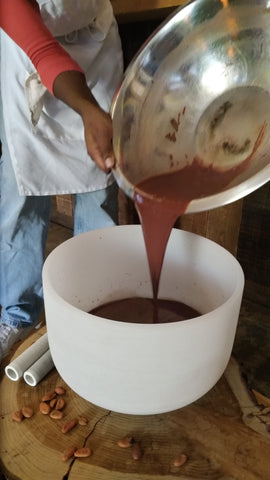

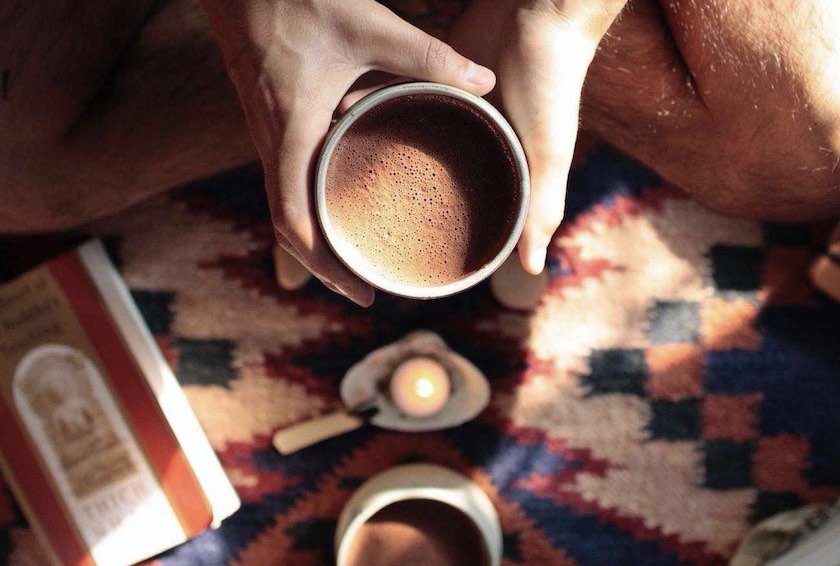


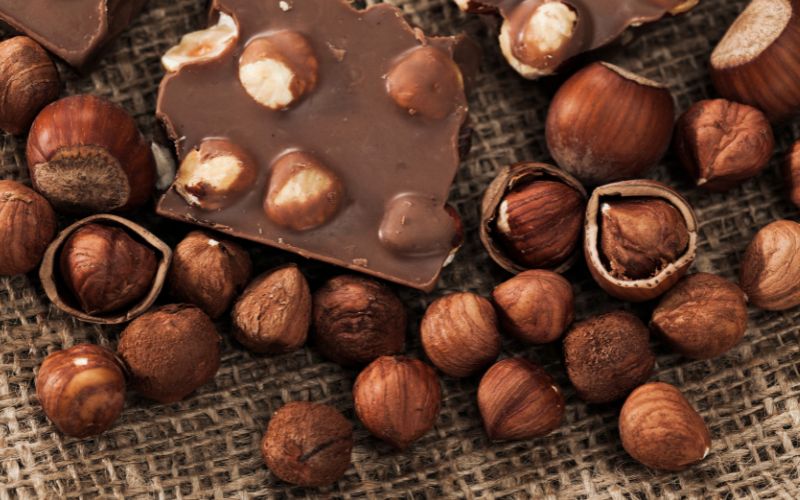
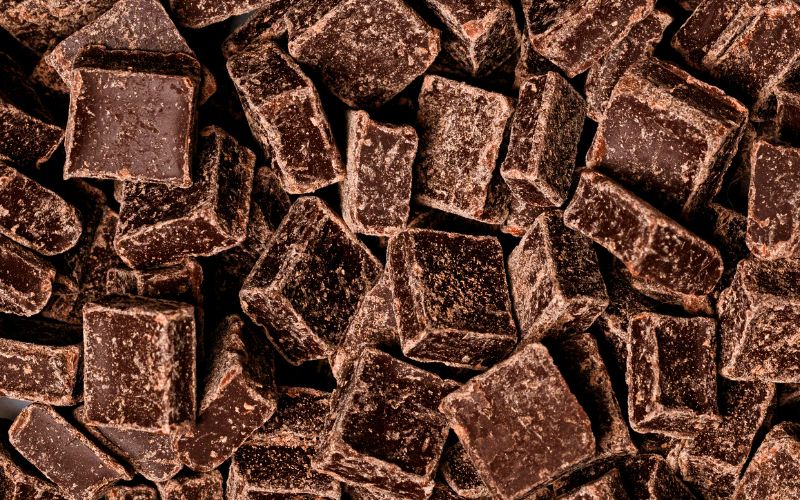
Comment
That reminds me of when Lovey Howell (Gilligan’s Island) said in many cases. “What does one wear to a….” ______ i.e “Headhunting Party”